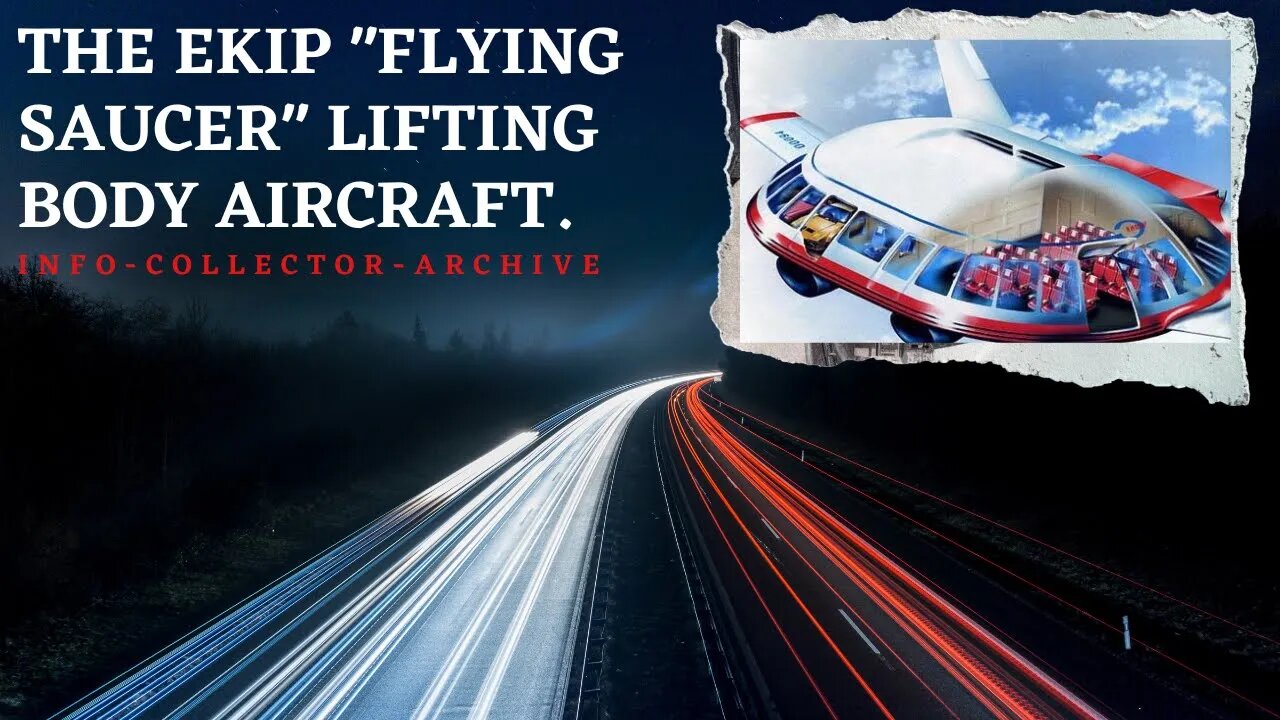Premium Only Content

The EKIP "Flying Saucer" Soviet Union/Russia Project
The EKIP concept was developed by Professor Lev Nikolayevich Schukin (Russian: Лев Николаевич Щукин), an engineer trained in aircraft engine development who also worked for the NPO Energia rocket design corporation and participated in the Soviet portion of the Apollo–Soyuz Test Project in 1975, the first US-Soviet space linkup. In 1978, the EKIP concept was first proposed to Soviet military authorities, and in 1979, Schukin founded the EKIP NPP (scientific-production enterprise), which was based in Podlipki (Korolev). In 1980, the EKIP project initiated laboratory studies and engineering work. The first bench test on a small-scale model was conducted in 1982 at the top-secret Geodesia research institute in Krasnoarmeysk, Moscow Oblast. Major work on the still top-secret project began in 1987, and flight tests of the first scale model began in 1990–1991. This first radio-controlled flown aircraft was called the L-1 model, and it had a T-tail empennage. Initially the flights took place at the Sokol Aircraft Plant, which was known for producing MiG fighter aircraft. After radio-control problems caused the scale model to crash during a flight in snowy conditions, the Nizhny Novgorod manufacturing plant banned further EKIP test flights. Scale model testing was then moved in April 1990 to the Saratov Aviation Plant, where Yakovlev aircraft were manufactured. In 1992, another small, unmanned model crashed from a height of 40 m (130 ft), but it later flew successfully after repairs and ballast adjustment. That year, the EKIP Aviation Concern (EKIP AK) was founded by the EKIP NPP, Saratov Aviation Plant, and the Triumph NPP.
The concept made its public debut in 1992 at the Mosaeroshou (the predecessor to the MAKS air show), and it appeared at other exhibitions over the next two years, including the 1993 Paris Air Show. At the MAKS air show in September 1993, Schukin described three versions being developed: an 8-metric-ton (18,000 lb), single-deck, 20-seat model; a 35-metric-ton (77,000 lb) model using Ivchenko Progress engines from Ukraine and a Saturn engine to generate the air cushion; and a 120-metric-ton (260,000 lb), triple-deck model containing two passenger decks and one freight deck. Two 2.7 m (8.9 ft) span, L-2 models were successfully flown by remote control in the middle of that year.
In 1994, reports about the EKIP began to appear in Western media, and the L3 model (which could carry 400 passengers or 40 tonnes of cargo) had earned provisional orders for 1,500 aircraft from the North Siberian Development Board, a Russian food distribution agency. At this time, the Saratov Aviation Plant was building an unmanned, 15 m (49 ft) span L2-3 model for flight testing. The all-metal L2-3 model would be powered by two Saturn/Lyulka AL-34 engines, which generate an air cushion for takeoff and landing and power the boundary layer control system.
-
 LIVE
LIVE
Barry Cunningham
6 hours agoBREAKING NEWS: KAROLINE LEAVITT HOLDS WHITE HOUSE PRESS CONFERENCE (AND MORE NEWS)
2,024 watching -
 LIVE
LIVE
Major League Fishing
6 days agoLIVE! - Fishing Clash Team Series: Challenge Cup - Day 5
260 watching -
 2:53:12
2:53:12
Right Side Broadcasting Network
6 hours agoLIVE REPLAY: White House Press Secretary Karoline Leavitt Holds a Press Briefing - 8/28/25
97.9K37 -
 1:38:09
1:38:09
Simply Bitcoin
4 hours ago $0.97 earnedIs This Your LAST Chance to Buy Bitcoin Before the GENERATIONAL Bull Run Begins? | EP 1320
16.3K1 -
 LIVE
LIVE
StoneMountain64
2 hours ago#1 WARZONE TACTICIAN + New Battlefield Trailer
208 watching -
 20:03
20:03
Adam Does Movies
3 hours agoAlien: Earth Episode 1 - Recrap
11.5K -
 15:38
15:38
IsaacButterfield
10 hours ago $0.42 earnedExploiting His Baby For Views (The Island Boys)
8.76K11 -
 32:09
32:09
The Boomer Effect
7 hours agoBuy American and Build America
8.52K -
 1:59:46
1:59:46
The Charlie Kirk Show
3 hours agoShould Taylor Swift Submit? + What's Wrong In Minneapolis? + MAHA vs. CDC | 8.28.2025
56.5K27 -
 50:23
50:23
The White House
3 hours agoPress Secretary Karoline Leavitt Briefs Members of the Media, Aug. 28, 2025
38.2K26